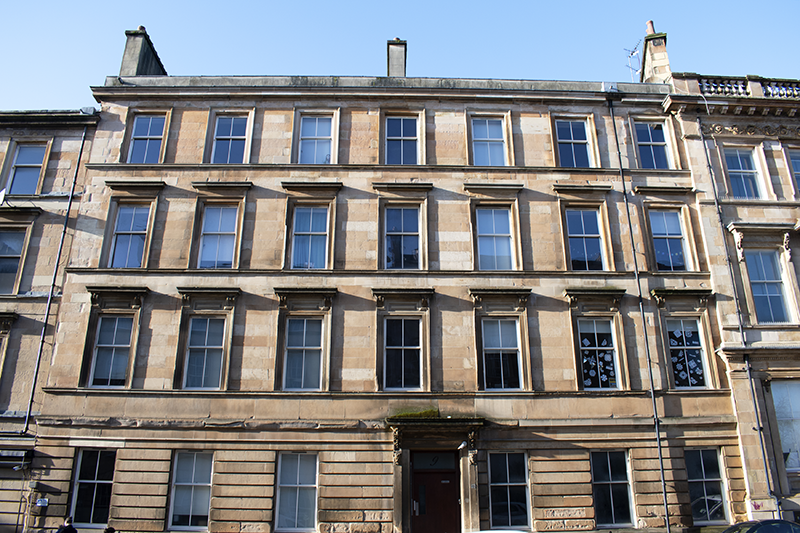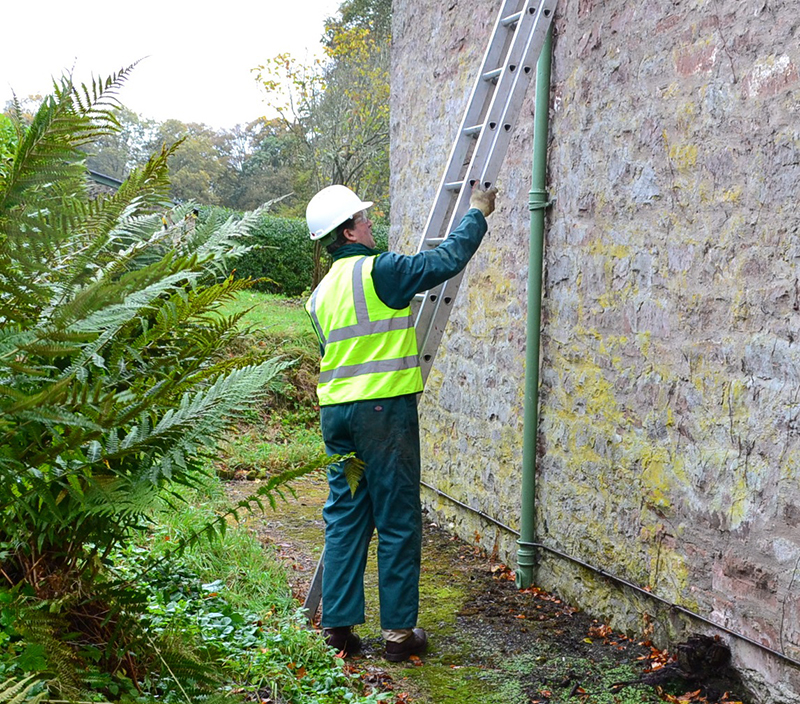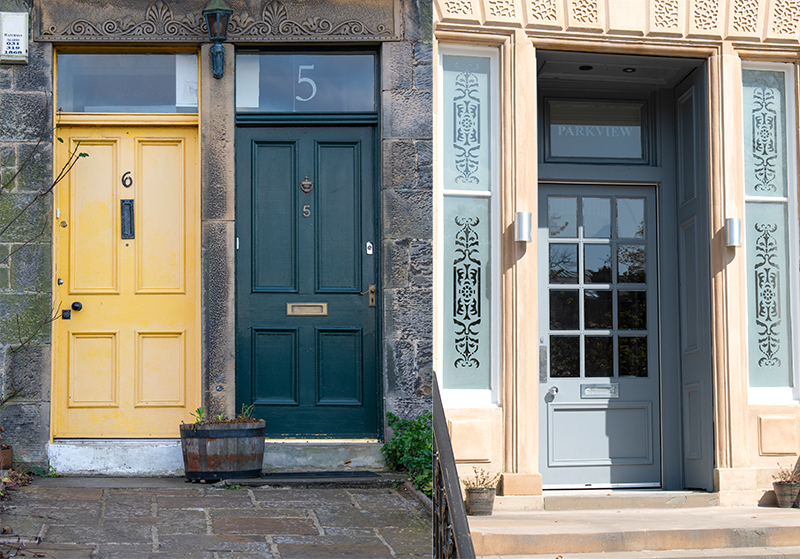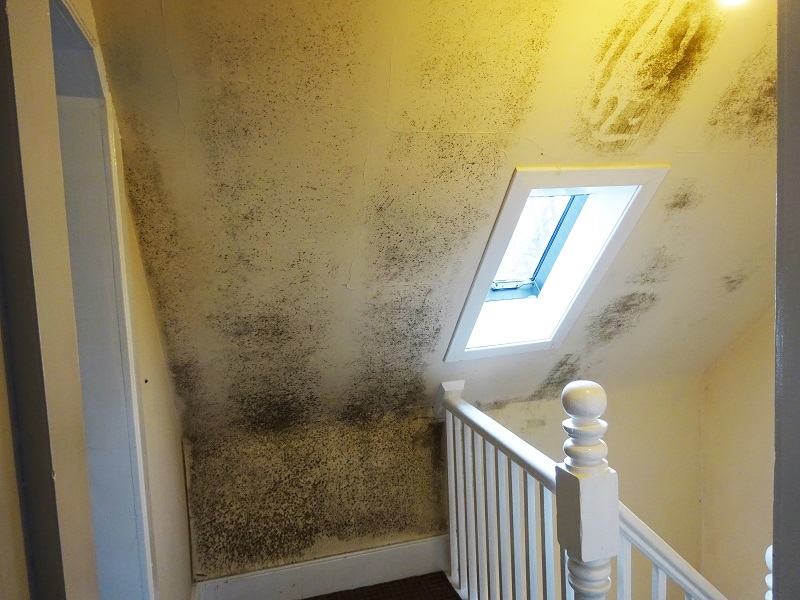Is your home winter ready? Top tips for Maintenance Week
Maintenance | Written by: Moses Jenkins | Tuesday 12 November 2024

This National Maintenance Week (11-17 November), we’re supporting traditional building owners to get their homes ready for winter by sharing top hints and tips for traditional building maintenance.
Around 1 in 5 (18%) of homes in Scotland today are traditional buildings constructed before 1919 – from the characteristic tenements of its urban landscapes to the terraced houses and detached cottages of many towns and villages. Traditional buildings are often perceived as being less energy efficient than those built more recently, but this does not have to be the case. There are many ways to make traditional buildings more energy efficient as well as adapting them to a changed climate.
Maintaining these traditional homes also has a crucial role to play in achieving net zero. Ensuring that traditional buildings are in a good state of repair means they will provide many more years of use, helping avoid the carbon emissions and waste that come with demolishing a structure and building a new one. Traditional buildings are adaptable, versitile, and are an integral part of the drive to create a circular economy.
Moses Jenkins, one of our traditional building maintenance experts, explains how taking small steps now can make a big difference in ensuring traditional homes keep as much heat in (and rain out) as possible this winter.
Tip #1: Understand how your building works

To maintain and improve your traditional building, you need to understand how that building works. This means having a basic understanding of the materials from which the building is constructed and how these perform. For example, understanding the way warm, moist air is moved throughout a building by ventilation, or how lime-based mortar allows external water to dissipate from building fabric. This will allow you to choose the correct methods and materials, whether you are repairing or insulating your building.
Our Short Guide: Maintaining Your Home explains how a traditional building works.
Tip #2: Inspect your home

Scotland’s climate is changing – it’s getting warmer, wetter, and we’re experiencing extreme weather events more frequently. The most important thing you can do for your home is to undertake regular inspections. This makes it easier to spot problems as soon as they develop, which means they will be less costly to address.
Make sure to keep an eye out for discolouration on walls and ceilings as these can be a sign of building defects. Water forming puddles externally after heavy rainfall is a sign of poorly performing drainage, and condensation forming on the inside of windows can show issues around moisture management.
Find a checklist and maintenance plan in Short Guide: Maintaining Your Home.
Tip #3: Draught-proof your home

Traditional buildings were constructed with good ventilation which helps keep the building in good condition. However, where there is air flow that was not designed into the building this can be considered a draught and steps taken to rectify this. For example, draughts near windows or doors, might indicate an issue with the surrounding timber or fitting of the window. A careful balance needs to be struck between reducing draughts and ventilation.
Curtains and secondary glazing can be added to windows for a cost-effective way of increasing your heat retention. If your home has an unused chimney, draughts can be reduced with a chimney balloon or hearth board. Retaining ventilation to ensure the flue is ventilated is important.
Learn more about draught-proofing your home in our Guide to Energy Retrofit.
Tip #4: Learn how to spot and reduce condensation

Condensation can be a problem in Scottish homes over the winter. In some cases this can lead to mould, which in turn can have consequences for our health. By regularly inspecting your home, you can spot signs of condensation-related dampness. Remember that condensation can happen in areas which are unseen, for example behind furniture or in roof spaces.
There are also simple and low-cost things you can do to avoid the development of condensation. If you are drying clothes inside, do it in a well-ventilated part of your home, and consider opening windows for short periods to let moist air out. Low-cost air quality monitors can tell you when to boost ventilation by opening a window.
Use extractor fans in kitchens and bathrooms during and after cooking and bathing to ensure moisture is removed from your home appropriately. Extractor fans are only one pathway for ventilation in your home, so make sure that subfloor vents and trickle vents are unobstructed and functioning as intended where they are present.
If condensation forms on windows, wipe them down regularly to avoid undue moisture getting into the timber around the window. This may be a symptom of wider problems managing moisture within a building.
Learn more about spotting and avoiding condensation.
Tip #5: Clear your gutters and drains

As rainfall increases across Scotland and there are extended periods of heavy rain, it’s more important than ever to ensure that rainfall is guided away from your home and does not pool or stagnate in your drains and gutters.
Gutters, downpipes and surface drains should be free of debris and natural waste such as leaves or bird feathers, allowing rainwater to flow away from the building.
More help and advice
It can be hard to know where to start if you find a potential issue, but we’re here to help. Even small measures make a big difference to your home and your comfort. The building advice and publications on our website are the best place to start, and you can also get in touch with our Technical Conservation team at technicaleducation@hes.scot.
To find out more about maintenance of traditional buildings, and why this #HeritageMatters for net zero, visit the HES website.
About the author:
Moses Jenkins
Dr Moses Jenkins is a Project Manager at HES. He is the author of a number of technical advice documents, including the HES Guide to Energy Retrofit and the book Survey and Assessment of Traditionally Constructed Brickwork.
View all posts by Moses Jenkins



